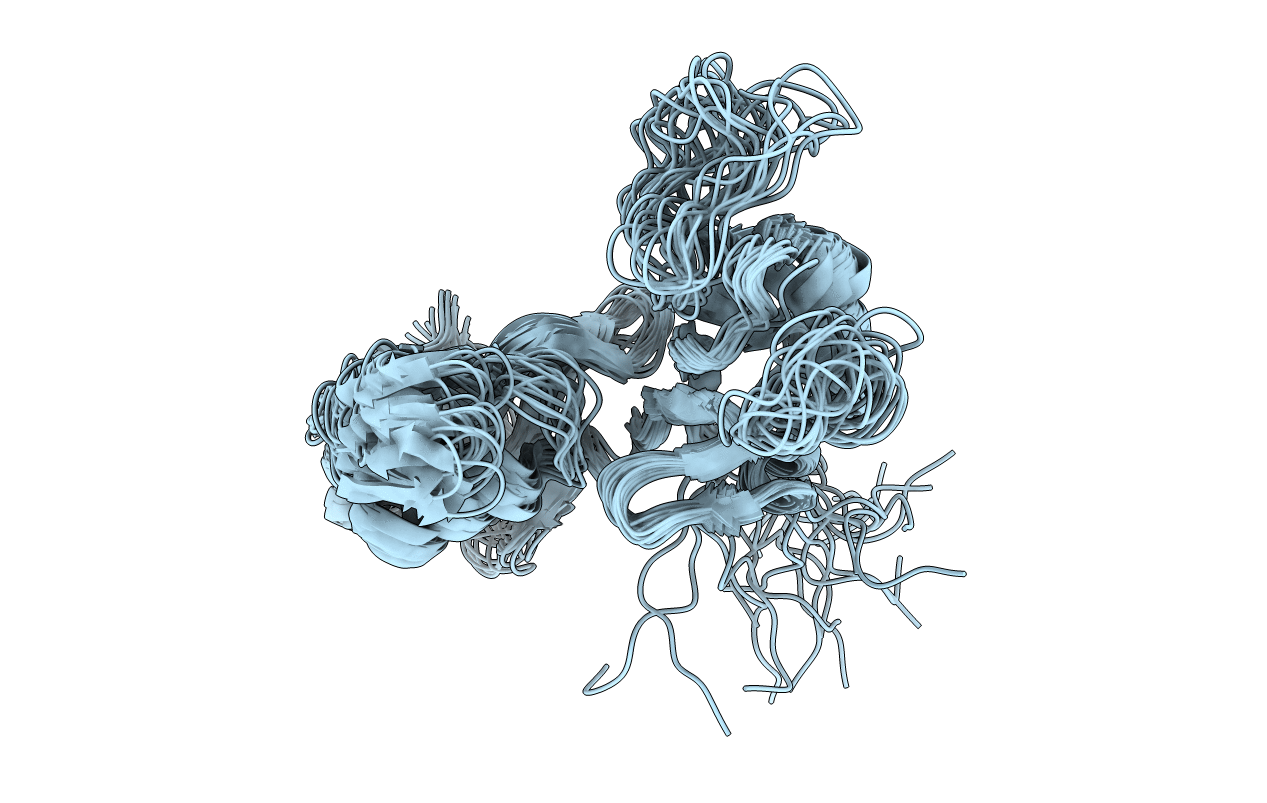
Deposition Date
2014-02-07
Release Date
2014-07-23
Last Version Date
2024-05-15
Entry Detail
PDB ID:
2MKJ
Keywords:
Title:
Solution structure of tandem RRM domains of cytoplasmic polyadenylation element binding protein 4 (CPEB4) in free state
Biological Source:
Source Organism:
Homo sapiens (Taxon ID: 9606)
Host Organism:
Method Details:
Experimental Method:
Conformers Calculated:
30
Conformers Submitted:
20
Selection Criteria:
structures with the lowest energy


